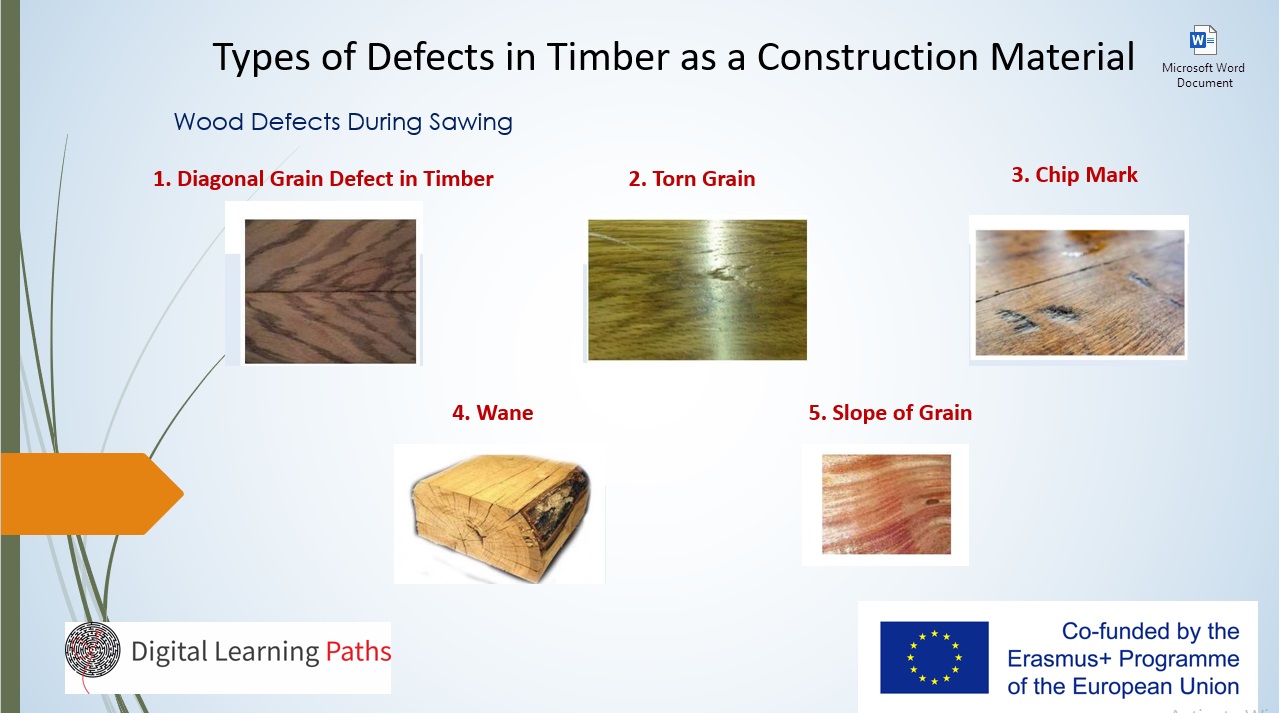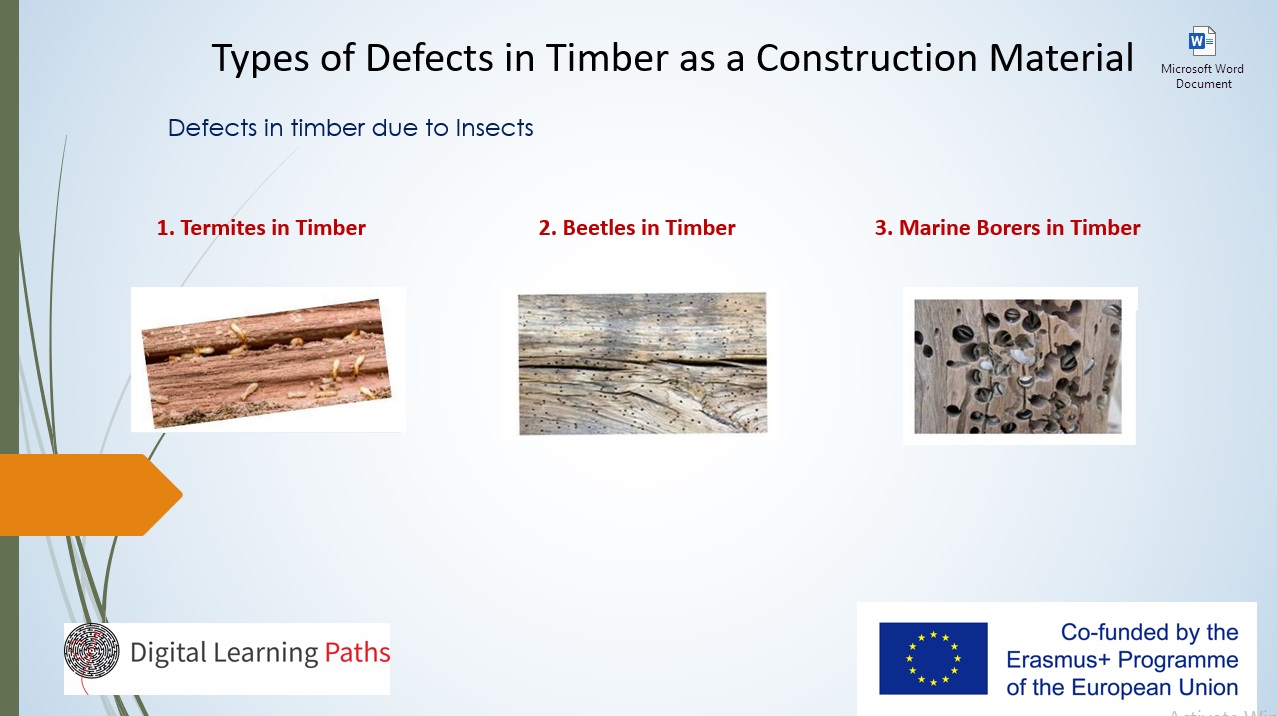Types of Defects in Timber as a Construction Material – Wood Defects during Sawing
Students will learn what types of defects in timber as construction material there are.
Photos from:
https://www.eximcorp.co.in/amp/assets/files/wood-defects.pdf
https://theconstructor.org/building/types-of-defects-in-timber/21521/
https://www.istockphoto.com/photo/wood-grain-and-chip-mark-patterns-gm918667736-252696556
Students look at the image and learn what types of defects in timber as construction material there are.

Students read the text and get the basic info about what types of defects in timber as construction material there are.
Wood Defects During Sawing
- Diagonal Grain Defect in Timber
During the conversion of timber, different cutting saws are used. The cutting should be done properly. If there is any improper cutting by the saw, then diagonal grains will appear.
- Torn Grain
In the conversion, many tools are used. If any of the tools or any other heavy things are dropped accidentally on the finished surface of timber it will cause a small depression, which is called torn grain.
- Chip Mark
When the timber is cut through the planning machine, the parts of the machine may form chip marks on it. Usually, they are indicated by chips on the finished surface.
- Wane
The edge part of the timber log contains a rounded edge on one side because of its original rounded surface. This rounded edge is called a wane.
- Slope of Grain
The localized slope of grain can be caused by knots. The slope of the grain can also be caused by a slight bend in the tree, which means that when a straight board is cut out of it, there is a bend in the grain. This tends to be a longer feature and may go unnoticed in an appearance product. Some species of Australian hardwoods (such as Jarrah and Blackbutt) can have “wavy grain”. This gives a very attractive rippled appearance in high-surface finish applications. Where timber is “backsaw”, the slope of grain can give interesting effects in the growth rings that enhance the appearance of the timber for some applications
Students look at the image and learn what types of defects in timber as construction material there are.
Photos from:
https://www.mightymitetermite.com/blog/species-of-termites-found-in-california/
https://www.creuse.sg/post/natural-wood-defects
https://commons.wikimedia.org/wiki/File:Martesia_striata_bivalves_in_wood_borings_(driftwood_on_marine_beach,_Cayo_Costa_Island,_Florida,_USA)_9_(24009470279).jpg

Students read the text and get the basic info about what types of defects in timber as construction material there are.
Defects in timber due to Insects
- Termites in Timber
Termites also known as white ants form a colony inside the timber and eat the core part of the timber rapidly. They do not disturb the outer layer of timber, so one cannot identify their presence. The trees in tropical and sub-tropical regions are mostly affected by these termites. However, some trees like teak, Sal, etc. cannot be attacked by termites because of the presence of termite-preventing chemicals in their cellulose part.
- Beetles in Timber
Beetles are a type of insect that destroy the sapwood of the tree and make a tunnel-like hole from the bark. Usually, the diameter of the hole is around 2 mm. They convert sapwood into powder form, and larvae of these beetles use these holes. Almost all hardwood trees can be prone to damage by these beetles.
- Marine Borers in Timber
Marine borers are found near coastal areas. They do not consume wood, but they make large holes of diameter up to 25mm in the timber to live inside it. They excavated up to 60mm deep in the wood. The wood attacked by marine borers is of less strength and discolored. They can attack all types of trees present in their region.
Students watch the video and get the general knowledge about what types of defects in timber as construction material there are due to insects.
SS do the quiz and check their learning achievements
Resource information